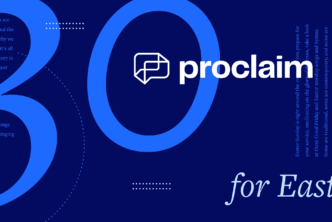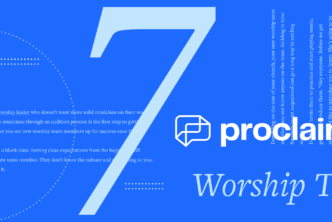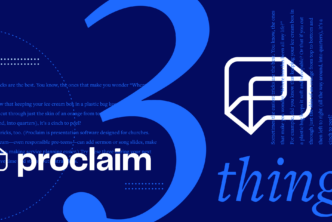A well-crafted setlist can mean the difference between a smooth worship set, and one that stalls out at the end of every song. Over the years I’ve learned that there are a few keys to consider when crafting your worship set.
1. Pray
This one doesn’t require any theory, but is probably the most important. Praying about the songs you choose cannot be overlooked. There have been countless times when I’ve hesitantly included a song only to have someone come up and say that that was the exact song they needed to hear. There have also been many times when I’ve made the wrong call, and took a song out only to have someone request it before service. With prayer we can discern the prompting of the Spirit, and choose songs that will help the congregation connect with God.
2. Talk to your pastor
This cannot be stressed enough. Have you connected with the pastor or are you flying solo this week? It is not uncommon for pastors to have a sermon schedule or at least a series of topics that they plan to cover. Use this as an opportunity to reinforce the theme by selecting appropriate songs. There is something about the sermon, songs, and even the media all serving one theme, that make the service much more memorable and help minimize distractions. One of the things that I love about Proclaim is that I can see how my pastor’s sermon outline is shaping up throughout the week and adjust my set accordingly.
3. Same key
If I could play every set in one key, I would. In fact, I’ve been known to rearrange entire songs to make them work in my set. I find the benefits of keeping things in one key far reaching. Not only do you enjoy the peace of mind staying in one key, it’s also easier on the band, and minimizes the distractions that come with switching keys. When subsequent songs are in the same key, you can easily transition by simply strumming the root chord or asking the keyboardist to sustain the pad in between the songs. When I can’t play all the songs in one key, I prefer ascending keys as opposed to descending. For example following a song in E, with a song in F or G as opposed to C or D. Using the equivalent major or minor key to pair songs is another great way to create smooth transitions between songs in different keys. For example follow a song in G with a song in Em or vice versa. Yet another useful trick is to use the circle of fifths. This will keep distractions from larger key jumps to a minimum.
4. Descending tempo
I find that starting with a fairly fast song between 140 to 110 beats per minute and selecting subsequent slower songs is optimal for a smooth flowing set. I like the second song to be around 80-100 beats per minute. Songs like “Our God“, “Hands to the Heaven“, “Christ Is Enough” are perfect. Once you are in the 65-75 range, you can easily linger there for the next two-three songs. Songs like “Heart of Worship“, “10,000 Reasons (Bless the Lord)“, “Holy Spirit” and countless others all live in this range. Aim for a 30 BPM jump at most to maintain optimal flow. If you find yourself needing a bigger jump, repeating the chorus or bridge of the faster song with minimal accompaniment (acoustic guitar or piano) and slowing down the tempo slightly, will help make the drastic jump less disruptive.
Examples of what I consider good flowing setlists:
- Wake | Key G | 131BPM
- Our God | Key G | 105 BPM
- Christ Is Enough | Key G | 83 BPM
- This I Believe (The Creed) | Key G | 72 BPM
- Hosanna (Praise Is Rising) | Key G | 118 BPM
- I Will Follow | Key G | 98 BPM
- Forever Reign | Key C | BPM 83
- It Is Well With My Soul | Key C| 77 BPM
- Blessed Be Your Name | Key A | 120 BPM
- This Is Amazing Grace | Key A | 100 BPM
- Great I Am | Key E | 80 BPM
- Anchor | Key E | 74 BPM




